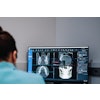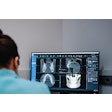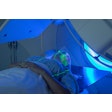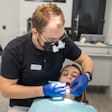Dear Oral Cancer & Diagnostics Insider,
The good news is more cancer patients are surviving than ever before. The bad news is that few dentists are willing to treat such patients due to the increased risk of osteonecrosis and other complications from radiation treatment, chemotherapy, or bisphosphonate use.
But a cottage industry of sorts is emerging to help address the issue: dental oncology.
We talked to Ryan Lee, DDS, PhD, who is finishing a clinical fellowship in dental oncology at Memorial Sloan-Kettering Cancer Center and works with these patients every day. Click here to read his compelling story.
In other Oral Cancer & Diagnostics Community news, people who received frequent dental x-rays have an increased risk of developing meningioma, the most commonly diagnosed primary brain tumor in the U.S., according to a study published in Cancer.
But the ADA quickly questioned the reliability of the report, asserting it was affected by "recall bias" and noting that newer x-rays deliver less radiation. And the American Academy of Oral and Maxillofacial Radiology also chimed in, citing "serious flaws" in the study's data-collection methods.
Meanwhile, suicide rates among patients with oral cavity and oropharyngeal cancer have increased significantly over the past three decades, particularly among male patients during the first year after diagnosis. Click here to read how Brian Hill, director of the Oral Cancer Foundation and a stage IV oropharyngeal cancer survivor, handled the tremendous physical and psychological impacts on his life.
In a related story, the cost of treating people with oral, oropharyngeal, and salivary gland cancers is significant, particularly for patients who undergo surgery, radiation, and chemotherapy. A study by Delta Dental of Michigan's Research and Data Institute found that total annual healthcare spending during the year following diagnosis averaged $79,151, compared with $7,419 in similar patients without these cancers.
In other news, findings from a large Danish database of cancer patients suggest that, although human papillomavirus (HPV) can trigger oropharyngeal cancer, patients who are HPV-positive and are light smokers or don't smoke respond well to treatment using radiotherapy without chemotherapy. Read more.
And, most Americans don't know about some potential causes of oral cancer, including alcohol consumption and HPV. Only 40% of women and 33% of men who responded to a survey by Kelton on behalf of the Oral Cancer Foundation recognized alcohol consumption as a risk factor for oral cancer, and less than 30% of both genders realized that a sexually transmitted virus is a causative factor.
Meanwhile, Texas researchers have developed a portable, miniature microscope designed to improve the ability to detect early-stage oral cancer and improve surgical margin assessments. Read about the probe, which uses lasers to see up to 500 microns below surface tissue and create full 3D images.
And British and American researchers are developing a new "lab on a chip" technique that can diagnose oral cancer quickly and effectively. Click here to read about the device, which could be used by dentists to determine whether a patient has oral cancer or other abnormalities in less than 20 minutes.
Finally, a Michigan State University surgeon is teaming up with Delta Dental's Research and Data Institute on a clinical trial to create a simple, cost-effective saliva test to detect oral cancer. Read about the search for biomarkers that can confirm the presence of oral cancer.



















